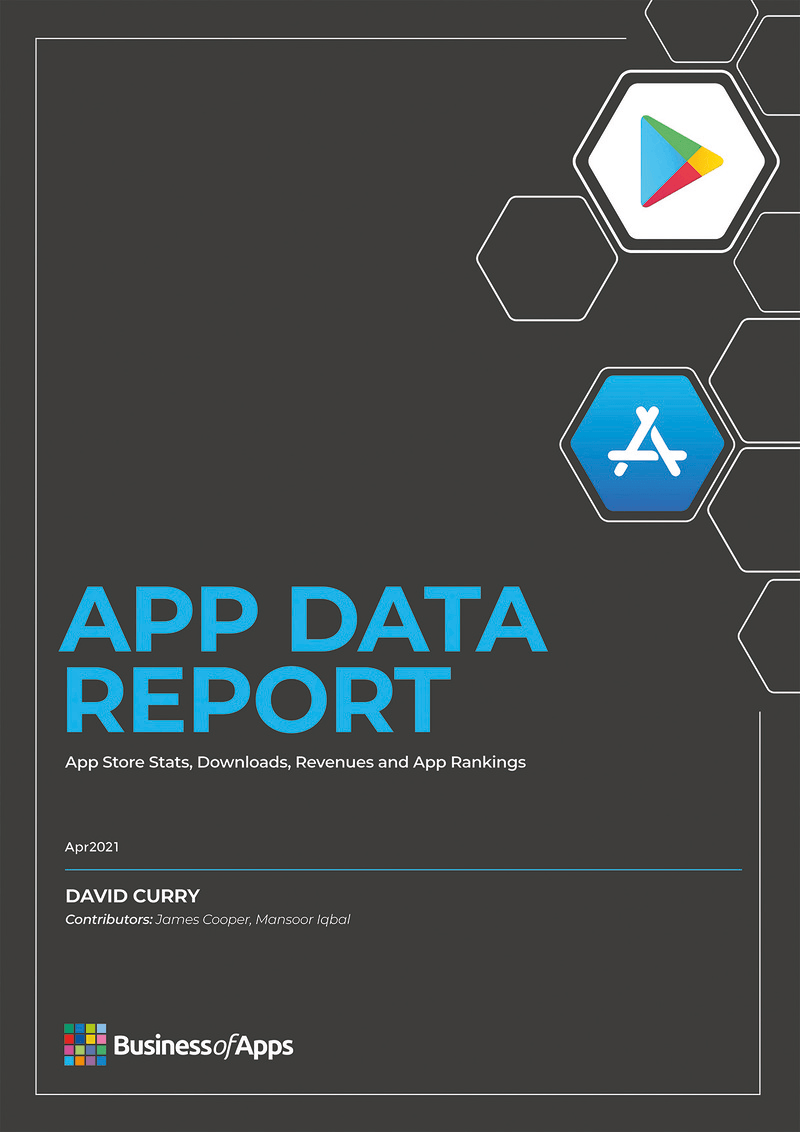The mobile app industry has been active for over a decade now, generating billions of dollars in revenue for Apple, Google and thousands of mobile app developers.
While originally not perceived as necessary by Apple or Google, which did not add app stores to the first versions of iOS and Android, it has become a key revenue stream for both of them.
Even with less than 15 percent market share, iOS has led the way in revenue generation for app developers. This is partly due to iPhone being more popular in regions with high income, such as Japan and the United States, which also tend to spend more on apps.
In comparison, Google Play’s largest markets are India, South-east Asia and South America, which typically generate less revenue per user. Apple also operates in China, while the Google Play store is banned in the country. Several third-party Android app stores are available in China, and are estimated to generate over $8 billion in yearly revenue.
Both platforms have matured in the past few years, adding new ways for developers to increase revenue generation. These include a multi-purpose advertising platform, in-app purchasing systems and subscription services, all of which is covered in this app market analysis.
Subscription revenues have increased rapidly over the past few years, as every app tries to entice users to purchase a monthly or annual subscription to get premium services. Almost every app category now has leaders which sell subscriptions, whether that’s in music, video, health, fitness, wellness, language learning, or even food delivery.
In the past two years, there has been a collective effort by developers to reduce the percentage of revenue Apple and Google take for in-app purchases, alongside providing alternative ways for users to pay for subscriptions. Apple and Google have compromised slightly, adjusting the percentage take from 30 to 15 percent, but developers and anti-competitive departments are calling for further revisions.
What will be the next big money maker for this app economy? Some expect the metaverse, or some form of it, to be where app developers spend a lot of their resources in the next decade, perhaps trying to replicate the success of Roblox and Minecraft in building an in-game economy.
We have collected data and statistics on app revenues. Read on below to find out more.
App Revenue Key Statistics
- Mobile ad spend in 2022 reached $336 billion, a 13.8% increase on the previous year
- Android and iOS app consumer spending declined to $129 billion in 2022, a 3% decrease year-on-year
- iOS was responsible for 67% of app consumer spending in 2022
- Games accounted for 63% of consumer app spending in 2022. Google Play contributed $37.3 billion, or about 38% of the total amount
- Subscription revenues increased to $17.1 billion in 2022, iOS was responsible for 77% of that revenue
Want to learn all about the app industry? Our App Data Report covers revenues, downloads, and number of apps across the Apple App Store and Google Play, alongside the top grossing and most downloaded individual apps.App Data Report 2023
Mobile ad spend
Mobile ad spend reached $336 billion in 2022, a 13.8% increase on the previous year. This is the lowest annual percentage growth and 9% less than the previous year.
Annual mobile ad spend 2016 to 2022 ($bn)
App and game revenues
App and game revenues decreased by 3% in 2022 to $129 billion. This is the first recorded annual decline in consumer app spending.
Quarterly app and game revenue 2016 to 2022 ($bn)
Annual app and game revenues 2016 to 2022 ($bn)
| Year | Revenue ($bn) |
|---|---|
| 2016 | 43.5 |
| 2017 | 58.1 |
| 2018 | 71.3 |
| 2019 | 89 |
| 2020 | 111 |
| 2021 | 133 |
| 2022 | 129 |
Sources: data.ai, Sensor Tower, App Data Report
iOS app and game revenue
App and game revenues for iOS increased by 1.99% in 2022 to $86.8 billion. iOS was responsible for 67% of total app consumer spending in 2022.
Quarterly iOS app and game revenue 2016 to 2022 ($bn)
Annual iOS app and game revenue 2016 to 2022 ($bn)
| Year | Revenue ($bn) |
|---|---|
| 2016 | 28.6 |
| 2017 | 38.5 |
| 2018 | 46.6 |
| 2019 | 58.4 |
| 2020 | 72.3 |
| 2021 | 85.1 |
| 2022 | 86.8 |
Sources: data.ai, Sensor Tower, App Data Report
Google Play app and game revenue
App and game consumer spending on Google Play decreased by 11.6% to $42.3 billion. It is the first annual decline for Google Play, but still above 2020 spend.
Quarterly Google Play app and game revenue 2016 to 2022 ($bn)
Annual Google Play app and game revenue 2016 to 2022 ($bn)
| Year | Revenue ($bn) |
|---|---|
| 2016 | 15 |
| 2017 | 21.2 |
| 2018 | 24.8 |
| 2019 | 30.6 |
| 2020 | 38.6 |
| 2021 | 47.9 |
| 2022 | 42.3 |
Sources: data,ai, Sensor Tower
Gaming app revenues
Consumer spending on mobile games declined by 9.2% in 2022, a huge downturn in the mobile gaming market which had grown by an average of 19% on the five years prior to 2022.
Quarterly game revenue 2016 to 2022 ($bn)
Annual game revenue 2016 to 2022 ($bn)
| Year | Revenue ($bn) |
|---|---|
| 2016 | 37.7 |
| 2017 | 47 |
| 2018 | 53.9 |
| 2019 | 63.2 |
| 2020 | 79.5 |
| 2021 | 89.6 |
| 2022 | 81.3 |
Sources: data.ai, Sensor Tower
iOS gaming app revenue
Game revenues on iOS decreased by 4.3% in 2022 to $50 billion. Even with this negative growth, iOS was responsible for 61% of all mobile gaming revenues.
Quarterly iOS game revenue 2016 to 2022 ($bn)
Annual iOS game revenue 2016 to 2022 ($bn)
| Year | Revenue ($bn) |
|---|---|
| 2016 | 23.4 |
| 2017 | 29.6 |
| 2018 | 32.3 |
| 2019 | 38 |
| 2020 | 47.6 |
| 2021 | 52.3 |
| 2022 | 50 |
Sources: data.ai, Sensor Tower
Google Play gaming app revenue
Game revenues on Google Play decreased by 16% in 2022 to $31.3 billion, wiping almost all of the gains it made in 2021.
Quarterly Google Play game revenue 2016 to 2022 ($bn)
Annual Google Play game revenue 2016 to 2022 ($bn)
| Year | Revenue ($bn) |
|---|---|
| 2016 | 14.3 |
| 2017 | 17.4 |
| 2018 | 21.6 |
| 2019 | 25.2 |
| 2020 | 31.9 |
| 2021 | 37.3 |
| 2022 | 31.3 |
Sources: data.ai, Sensor Tower
App revenues
While consumer spending on games fell into the negatives in 2022, app revenues climbed by 10.1% to $47.8 billion.
Quarterly app revenue 2016 to 2022 ($bn)
Annual app revenue 2016 to 2022 ($bn)
| Year | Revenue ($bn) |
|---|---|
| 2016 | 5.5 |
| 2017 | 12.7 |
| 2018 | 17.5 |
| 2019 | 25.8 |
| 2020 | 32.1 |
| 2021 | 43.4 |
| 2022 | 47.8 |
Sources: data.ai, Sensor Tower
iOS app revenue
App revenues on iOS increased by 10.6% in 2022 to $36.3 billion. iOS was responsible for 75% of consumer spending on apps in 2022.
Quarterly iOS app revenue 2016 to 2022 ($bn)
Annual iOS app revenue 2016 to 2022 ($bn)
| Year | Revenue ($bn) |
|---|---|
| 2016 | 4.8 |
| 2017 | 8.9 |
| 2018 | 14.3 |
| 2019 | 20.4 |
| 2020 | 24.7 |
| 2021 | 32.8 |
| 2022 | 36.3 |
Sources: data.ai, Sensor Tower
Google Play app revenue
Google Play saw huge growth in consumer spending on apps in 2021, with revenues increasing by 58.2%. In 2022, that figure was much lower, at 8.4%, with total revenues of $11.5 billion for the year.
Quarterly Google Play app revenue 2016 to 2022 ($bn)
Annual Google Play app revenue 2016 to 2021 ($bn)
| Year | Revenue ($bn) |
|---|---|
| 2016 | 0.7 |
| 2017 | 3.8 |
| 2018 | 3.2 |
| 2019 | 5.4 |
| 2020 | 6.7 |
| 2021 | 10.6 |
| 2022 | 11.5 |
Sources: data.ai, Sensor Tower
App revenue by region
China, Japan and the United States are far ahead of all other countries in terms of app revenue generation, although Taiwan, South Korea and the UK generate over $2 billion each.
Annual app revenue by region 2016 to 2022 ($bn)
Subscription app revenue
Subscription revenue has continued to grow year-on-year, despite several setbacks from major apps, such as Netflix, Spotify and Epic Games, removing subscription services from both platforms.
Annual subscription app revenue 2016 to 2022 ($bn)
| Date | Revenue ($bn) |
|---|---|
| 2015 | 1.5 |
| 2016 | 2.4 |
| 2017 | 3.8 |
| 2018 | 4.6 |
| 2019 | 9.7 |
| 2020 | 13 |
| 2021 | 15.5 |
| 2022 | 17.1 |
Source: Sensor Tower
iOS subscription app revenue
Apple’s App Store generated the lion’s share of subscription revenue, $13.2 billion in 2022, or 77% of all subscription revenue.
Annual iOS subscription app revenue 2016 to 2022 ($bn)
| Date | Revenue ($bn) |
|---|---|
| 2015 | 1.3 |
| 2016 | 1.9 |
| 2017 | 3.1 |
| 2018 | 3.6 |
| 2019 | 7.8 |
| 2020 | 10.3 |
| 2021 | 12.1 |
| 2022 | 13.2 |
Source: Sensor Tower
Google Play subscription app revenue
Google Play generated far less subscription revenue than iOS, but the ecosystem has continued to grow each year.
Annual Google Play subscription app revenue 2016 to 2022 ($bn)
| Date | Revenue ($bn) |
|---|---|
| 2015 | 0.2 |
| 2016 | 0.5 |
| 2017 | 0.7 |
| 2018 | 1.1 |
| 2019 | 1.9 |
| 2020 | 2.7 |
| 2021 | 3.4 |
| 2022 | 3.9 |
Source: Sensor Tower



